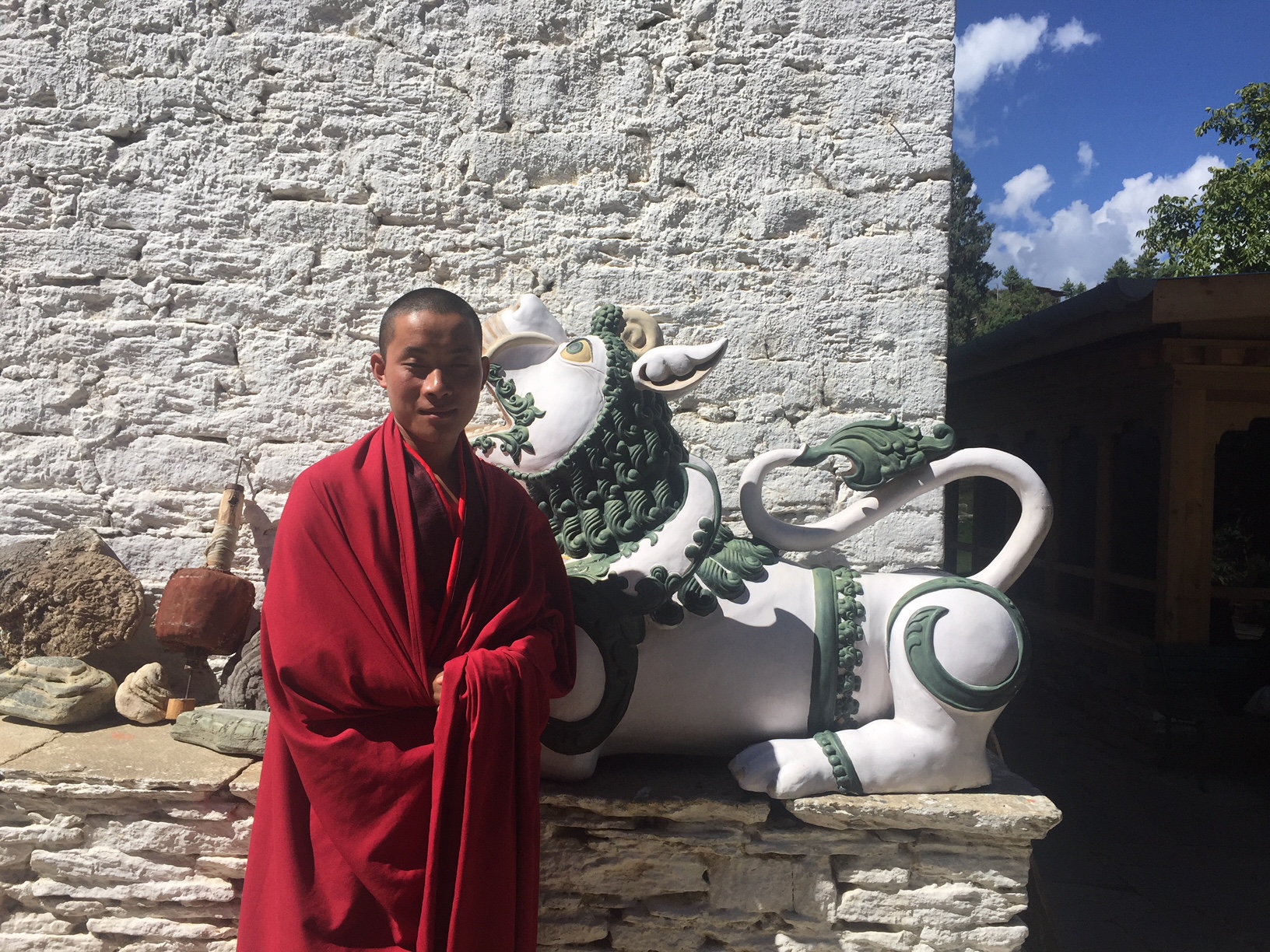Druk Yul, Land of the Thunder Dragon
punakha dzong
Bridge at Punakha Dzong over the Mother River
Marijuana growing wild along the roads, red peppers drying on metal roofs, monks in crimson and burgundy robes checking their cellphones, prayer flags, cows ambling undisturbed on roads, exquisite handmade textiles — these are but a few of the images that come to mind when I think back on Bhutan.
Prayer flags on hike to tigers nest
Most dramatic of all are the majestic Himalayan mountains, gorges, and valleys enveloped in mist or set against an indigo blue sky. Emblematic of Bhutan, a Buddhist kingdom the size of Switzerland, nestled between Tibet and India, are its monasteries, temples, and majestic dzongs, (combination monastery and fortress). Its lush green rice terraces, brightly painted houses with roofs extending like a brim on a hat, people in traditional clothing and smiling children make for a true Shangri-La.
Tigers Nest monastery
For years, Bhutan, like Tibet cast a spell on me. With China’s invasion of Tibet however, I began turning my gaze to this last remaining Buddhist kingdom. Here, sacred mountain peaks remain off limits to climbers, and religious and cultural traditions prevail. Bhutan’s remoteness, (the airport was only constructed in the 1980’s), furthered by inaccessibility due to strict government policy, made it almost impossible to visit and hence all the more attractive.
This past September, my husband, David and I were fortunate to join a small group led by a Bhutan expert, John Leupold of Champaca Journeys. It exceeded all expectations.
Until 1972, Bhutan’s borders were closed to outsiders, excluding Indian and Nepalese workers and Tibetans seeking refuge. For another decade, intent on maintaining a sustainable form of tourism — and lacking in infrastructure such as good roads and electricity in more remote areas, it welcomed less than 1000 visitors a year. Still today, one can only enter with a special visa, an official tour operator and a rather steep sum of money: $250 a day that fortunately includes a hotel, meals, a guide and driver when necessary.
Contributing to its national pride is the unusual fact that it was never colonized. Today, however, another challenge — among many, exists: globalization. Many call it a new form of colonization. To counter this, Bhutan’s king and parliament, with much debate, voted not to join the World Trade Organization or the World Bank. The reasoning: not to be beholden to corporations such as McDonalds or Starbucks.
Also remarkable is the fact that it has no official relations with China. Rather, it looks primarily to India to the south for commerce as well as military protection from — you guessed it, China. (Interestingly, for centuries the Bhutanese and Tibetans were not the best of friends.)
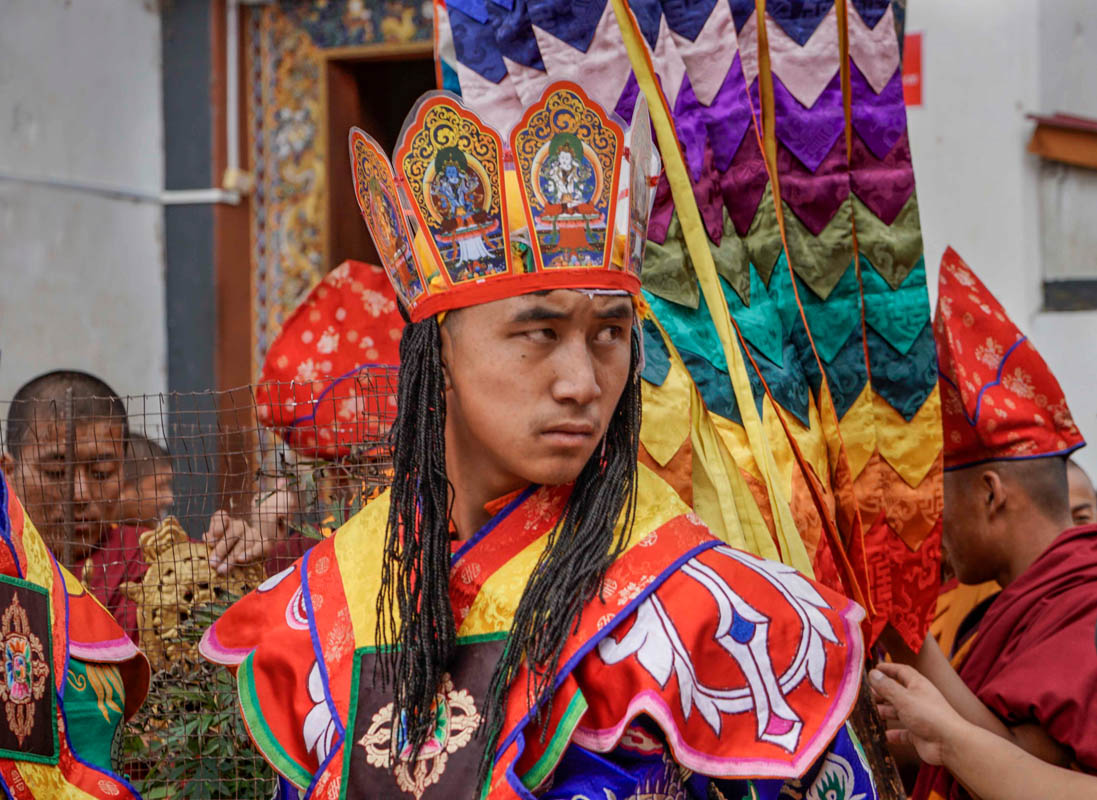
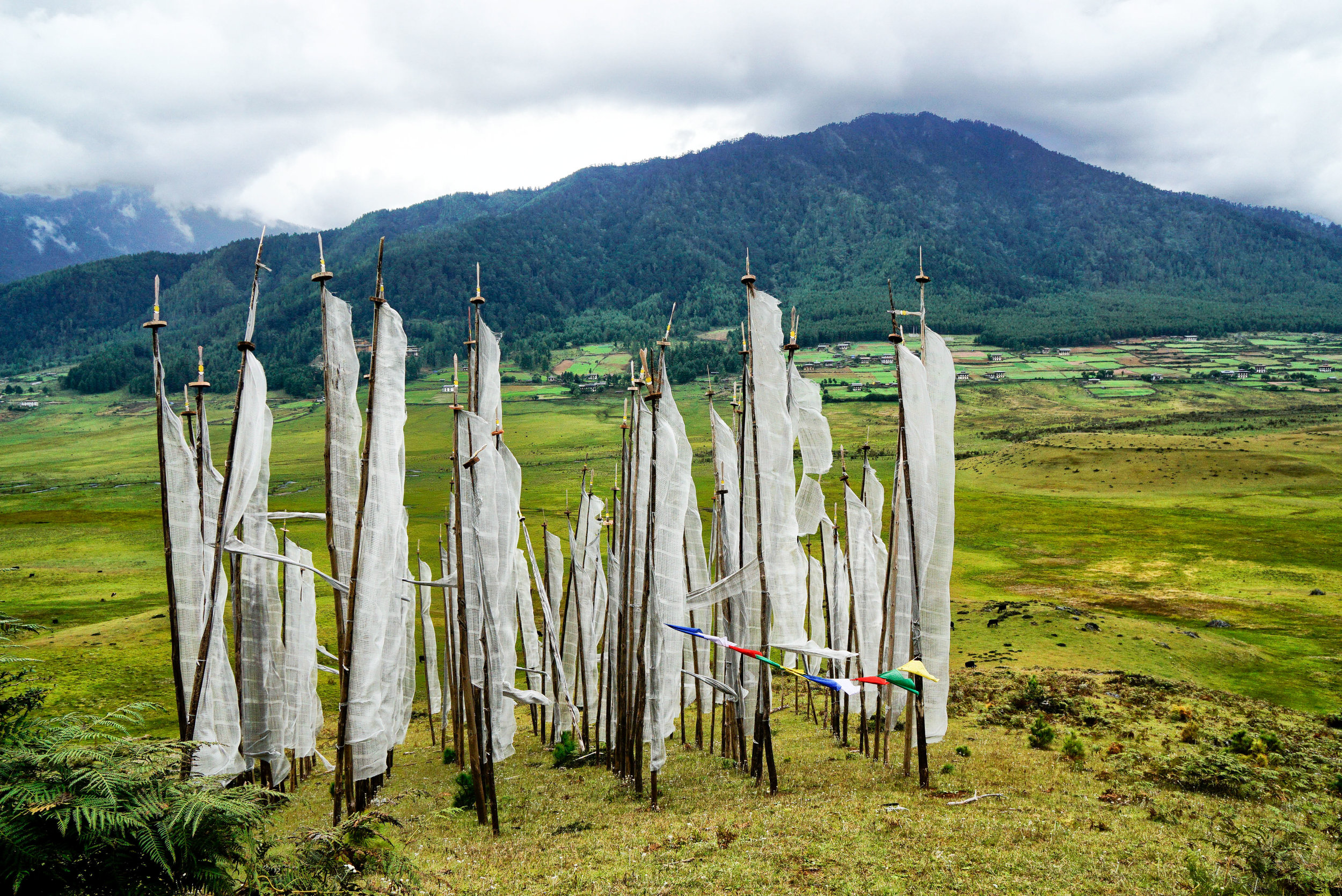
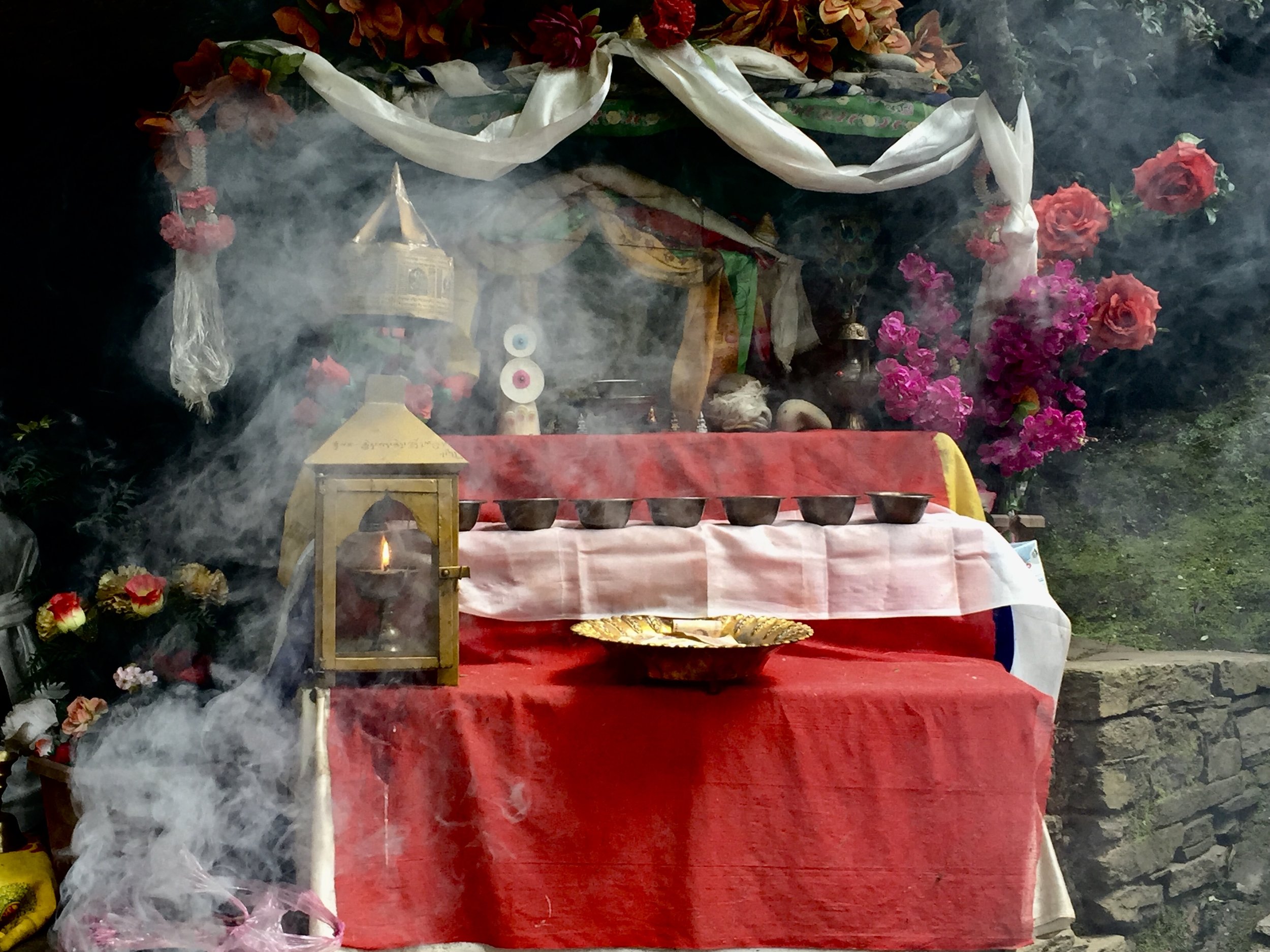
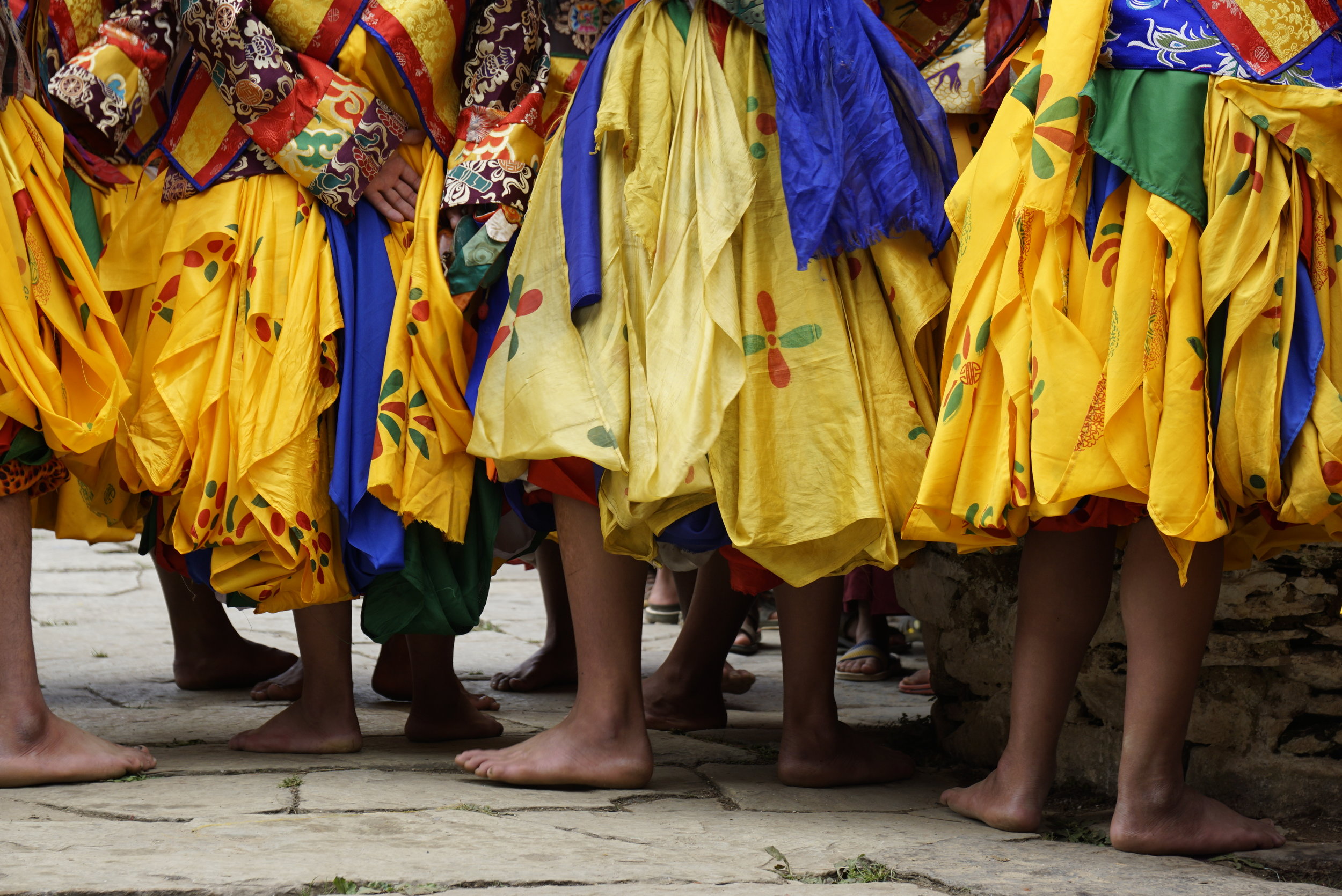
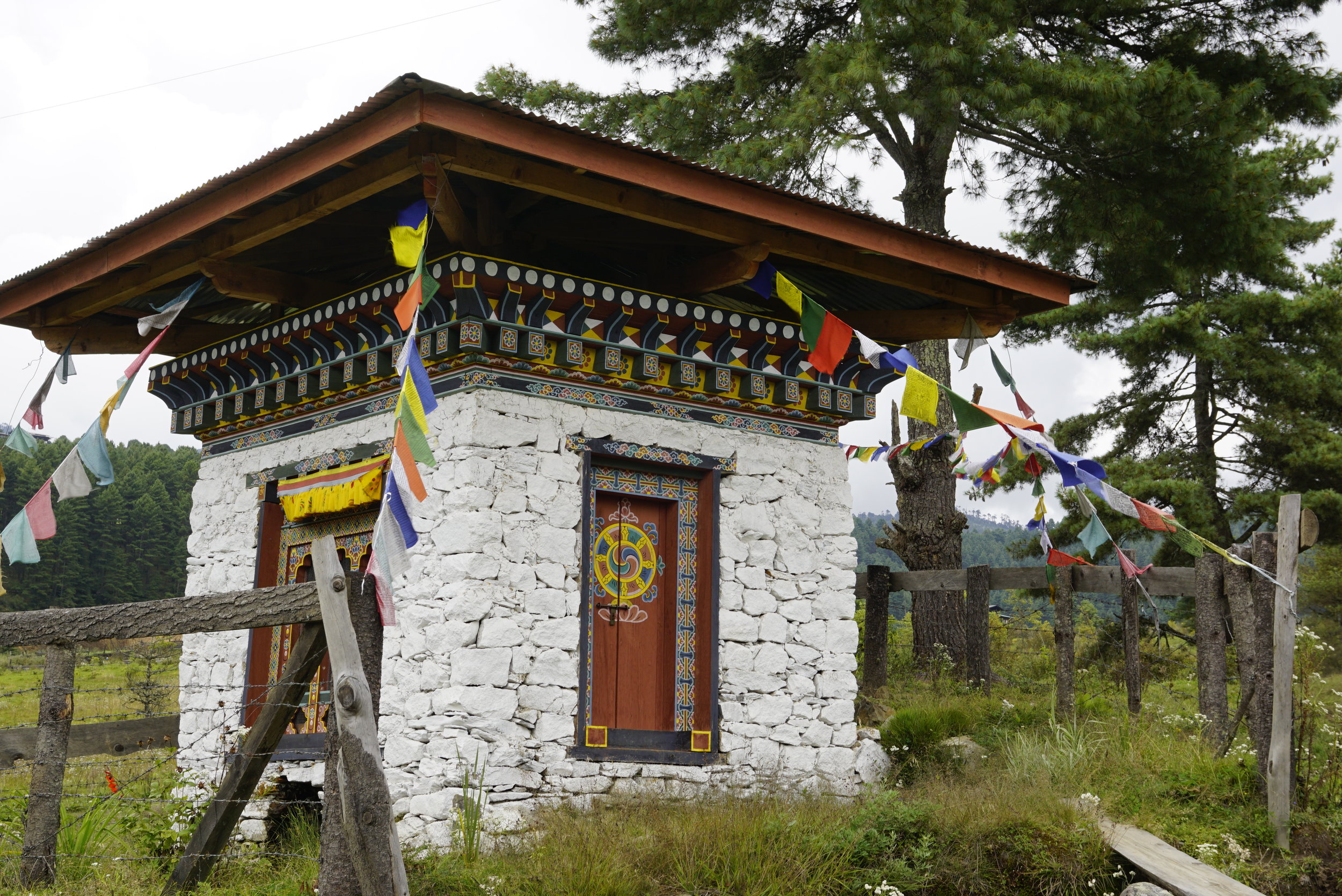
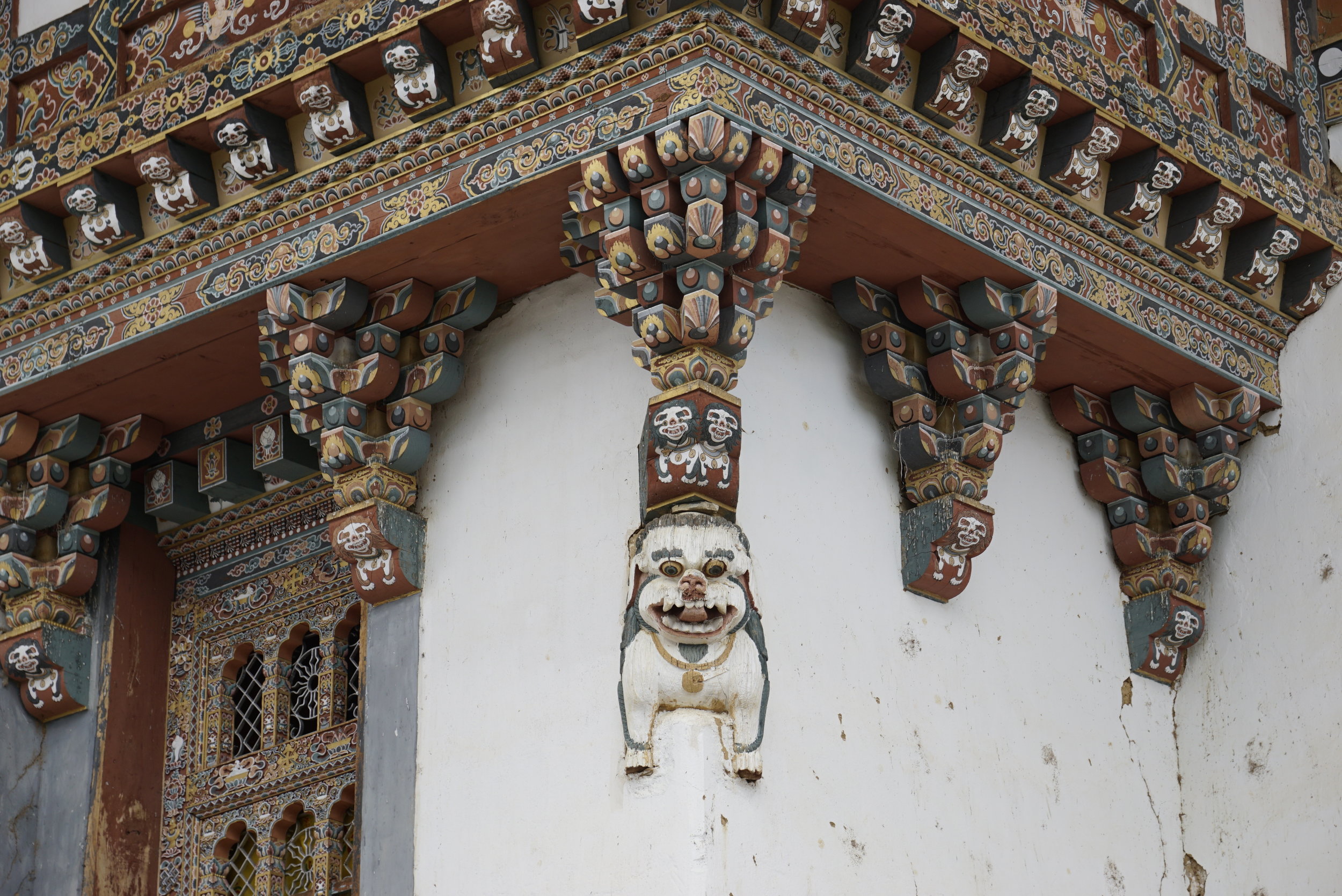
With a rich and robust cultural heritage as well as a deep respect for nature — 70% of the land, with extensive forests and bio-diversity, is under conservation; mining and logging are prohibited. People have asked me: what is its economy based on? The answer: primarily, hydroelectric power, agriculture and tourism. With an emphasis on developing the local economy, it is now becoming a model for many. Furthermore, the constitutional monarchy seeks to ensure health care and education for its citizens that total 3/4 million. And education is also provided by the Buddhist clergy when children as young as five are taken in as young monks.
Bhutan achieved notoriety when, a few decades ago, King Jimge Wangchuck, educated in the UK, developed the concept of a Gross National Happiness index. Instead of placing the highest value on the GNP index, he came to realize that economic success does not ensure happiness or translate into a content society. Low on a scale of wealthy countries, it is gradually and cautiously entering the 21st century. It seems to have skipped the 20th.
The Internet, television and cell phones came upon the scene after 2000 and credit cards more recently. In addition, smoking is banned throughout the country and plastic bags strictly controlled. There are no GMO crops and by avoiding herbicides and pesticides, the country plans to go 100% organic. Most importantly, it is not only carbon neutral but carbon negative; its vast forests absorb greenhouse gases and hydroelectric power provides cleaner energy.
Druk Yul, i.e. Bhutan, is indeed a land shrouded by magic, mystery and hope.
Other similar posts about Bhutan:
For info on Champaca Journeys, go to: http://www.champacajourneys.com/
Buddhist Monk at the Gangtey Palace in Paro







